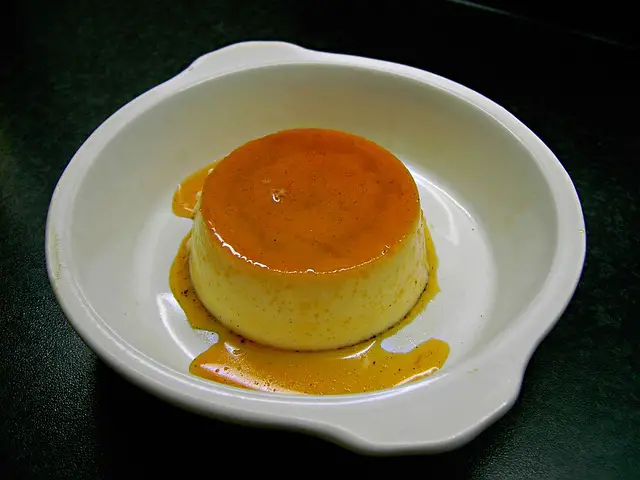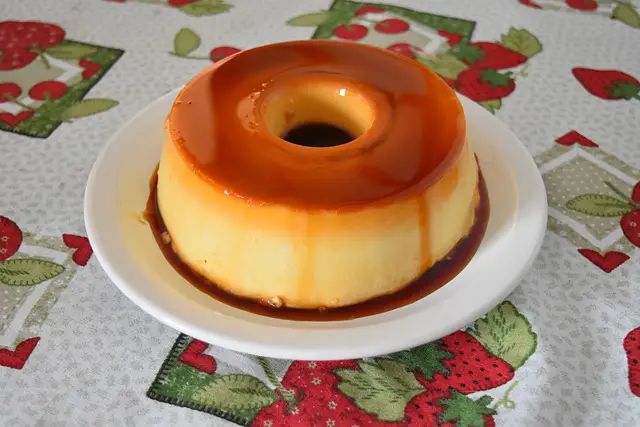Mousse is a light, airy dessert made with whipped cream or egg whites, while pudding is a creamy, often cooked dessert thickened with starch or eggs.
TL;DR Mousse Vs. Pudding
Mousse, with its airy and light texture, is known for its smoothness and elegance. It is created by folding whipped cream or egg whites into a flavored base such as chocolate or fruit puree. Mousse has a delicate nature and requires careful preparation to achieve the perfect consistency.
Pudding has a creamy and thick texture that is achieved by cooking ingredients like milk, sugar, cornstarch, or eggs together until they thicken. Pudding can be served warm or chilled and comes in various flavors like vanilla, butterscotch, or rice pudding.
What is a Mousse?

A mousse is a light and airy dessert characterized by its smooth and creamy texture. Typically made with ingredients like whipped cream, egg whites, and flavorings such as chocolate, fruit, or coffee, a mousse achieves its distinct texture through careful folding or whipping techniques.
The incorporation of air results in a velvety consistency. Commonly served chilled, mousses come in various flavors and variations, from classic chocolate to fruity or savory options. Elegant and versatile, mousses are popular desserts in both home kitchens and upscale dining establishments, celebrated for their rich taste and indulgent yet delicate nature.
What is a Pudding?

Pudding is a versatile and comforting dessert with a creamy consistency, typically made by combining milk, sugar, and a thickening agent such as cornstarch or eggs.
The mixture is heated until it thickens, creating a smooth and luscious texture. Puddings come in various flavors like vanilla, chocolate, butterscotch, or rice, appealing to diverse tastes.
Whether served warm or chilled, pudding is enjoyed globally and can be part of elaborate desserts or simple, homey treats. Its adaptability and timeless appeal make pudding a beloved classic, perfect for both casual family dinners and upscale culinary creations.
Mousse Vs. Pudding – Key differences
| Aspect | Mousse | Pudding |
|---|---|---|
| Texture | Light, airy, and fluffy. | Creamy and smooth. |
| Ingredients | Often includes whipped cream, egg whites, and flavorings. | Typically made with milk, sugar, and a thickening agent like cornstarch or eggs. |
| Consistency | Velvety and luxurious. | Thick and creamy. |
| Set or Chilled | Often served chilled. | Can be served warm or chilled, depending on the recipe. |
| Cooking Method | May involve cooking and chilling or setting in the refrigerator. | Typically involves cooking on the stovetop or baking. |
| Versatility | Adaptable to various flavors like chocolate, fruit, or coffee. | Comes in a range of flavors such as vanilla, chocolate, butterscotch, or rice. |
| Culinary Use | Often considered an elegant dessert suitable for special occasions. | Commonly enjoyed as a comforting and homey dessert. |
| Binding Agent | Relies on whipping techniques and stabilizers for aeration. | Uses thickening agents like cornstarch, eggs, or gelatin to achieve the desired consistency. |
| Examples | Chocolate mousse, fruit mousse. | Chocolate pudding, rice pudding. |
Mousse Vs. Pudding – Serving Styles and Occasions
Mousse:
Serving Styles:
- Often presented in elegant glassware or individual servings, showcasing its airy texture.
- Can be piped or molded for decorative presentations, allowing for creative and artistic displays.
Occasions:
- Preferred for upscale occasions, formal dinners, or as a sophisticated dessert option.
- Well-suited for celebratory settings, weddings, or events where an elegant dessert is desired.
Presentation:
- Emphasizes aesthetic presentation, with attention to the visual appeal of each serving.
- Ideal for those who appreciate a visually striking and refined dessert experience.
Variations:
- Offers a wide range of flavors, including chocolate, fruit, coffee, or savory options, catering to diverse tastes.
- Allows for experimentation with unique and gourmet flavor combinations.
- Often served chilled, maintaining its light and airy texture for a refreshing experience.
- Provides a cool and refreshing dessert option, perfect for warmer seasons or climates.
Pudding:
Serving Styles:
- Served in bowls or cups, either warm or chilled, offering a more traditional and homely presentation.
- Typically served as a scoop or spoonful, with emphasis on its creamy consistency rather than elaborate presentation.
Occasions:
- Versatile for everyday or casual gatherings, offering comfort and familiarity.
- Adaptable to both celebratory and everyday settings, making it a comforting treat for various occasions.
Presentation:
- Emphasizes the creamy consistency and taste, with less focus on elaborate visual presentation.
- Appeals to those who appreciate classic and straightforward dessert presentations.
Variations:
- Available in various classic flavors such as vanilla, chocolate, butterscotch, and may feature additional ingredients like rice or tapioca.
- Offers familiarity and comfort, with variations that often reflect traditional and time-tested recipes.
Temperature:
- Can be served warm or chilled, providing versatility in adaptation to personal preferences or seasonal considerations.
- Comforting when served warm, making it a suitable dessert choice for colder weather or cozy settings.
Image Credits
Featured Image By – Fabiana pfernandes from Pixabay
Image 1 By – DanaTentis from Pixabay
Image 2 By – Lebensmittelfotos from Pixabay








